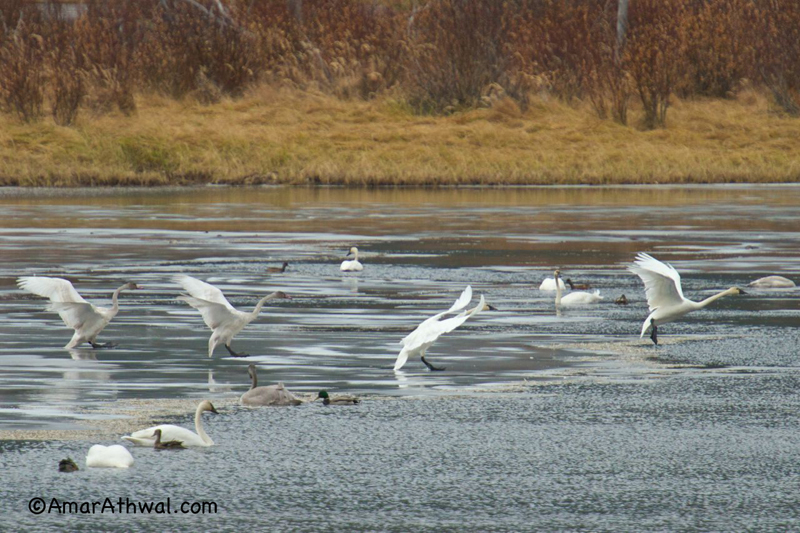Tundra Swans can take off just as easily from land or water with their necks extended straight out. Tundra Swans are North America’s most abundant swan species. They are species of low concern, being allowed to be hunted in some states and parts of Canada. But on the other hand, Trumpeter Swans are a species that is continuing its comeback after almost being decimated by the late 1800s. Thanks to its features being used in hat fashion, as writing quills and for other uses. So, the Trumpeter Swans are protected in places where Tundra Swans can be hunted. The problem we have in these places is that we birders sometimes make mistakes in identifying these two species. Let along those hunters who may have less knowledge about the different swans.
The good news about this family of Tundra Swans, one adult is in the front, followed by three juveniles and one other juvenile and adult outside the frame. All six were spotted in Banff National Park a few days ago, where no hunting is allowed. There were a few of us on the shore of the lake, enjoying watching them before they decided to move on. As they slowly make their way south where the water will stay open during the coming cold months.



